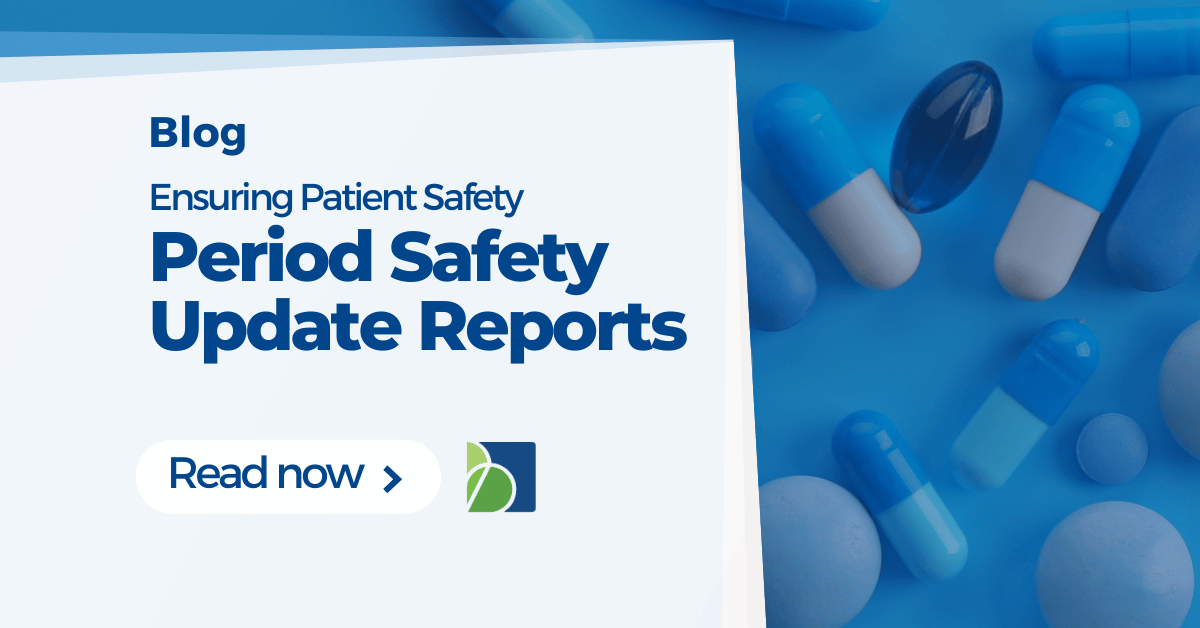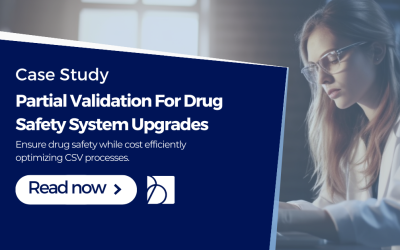The pharmaceutical industry constantly evolves, with new drugs being developed and approved daily. One critical aspect of ensuring the safety and efficacy of these medications is the periodic assessment of their risk-benefit profile. Enter Periodic Safety Update Reports (PSURs) or Periodic Benefit-Risk Evaluation Reports (PBRERs). These reports are essential to the post-authorization safety studies (PASS) and post-authorization efficacy studies (PAES) for medicines. They offer critical insights into a drug’s safety, efficacy, and overall risk-benefit profile after being approved. This article will delve into the importance, process, and challenges of medical writing for PSURs/PBRERs.
The Importance of PSURs/PBRERs
PSURs and PBRERs are reports that help us keep track of a drug’s performance after it has been approved for use. It’s a bit like a safety audit, continuously happening at regular intervals.
The primary aim is to ensure that the drug’s benefits outweigh any risks. Our understanding of the drug’s safety and efficacy might evolve as we gather more data from clinical trials and real-world usage.
Here’s why these reports are so crucial:
- Ongoing Evaluation: They ensure that we continually assess the drug’s safety and efficacy, considering any new data that comes to light.
- Risk-Benefit Assessment: These reports help to update our understanding of a drug’s risk-benefit balance, i.e., whether the benefits of using the drug still outweigh the potential risks.
- Identifying and Confirming Risks: If new risks are associated with the drug, these reports help identify them. They also confirm whether risks we were already aware of are still present and assess how frequently they occur.
- Risk Minimization Measures: If there are measures in place to reduce the risks of the drug, these reports evaluate how effective those measures are.
- Guiding Regulatory Decisions: Based on what these reports uncover, regulatory bodies like the FDA in the US or the EMA in Europe can decide whether they need to change the drug’s labeling, limit its use, or even remove it from the market.
So, in a nutshell, PSURs and PBRERs are critical in ensuring that a drug remains safe and effective for patient use, even after it has been approved. They help us stay vigilant, adapt to new information, and ultimately protect the health and safety of patients.
Regulatory Requirements for PSUR/PBRERs
Regulatory authorities, such as the European Medicines Agency (EMA) and the US Food and Drug Administration (FDA), have specific requirements for submitting PSURs/PBRERs. These requirements vary depending on the drug’s approval status and the region in which it is marketed. In general, pharmaceutical companies must submit PSURs/PBRERs at regular intervals throughout the drug’s life cycle, with the frequency of submissions typically decreasing over time.
You can find guidance on PSURs from various regulatory authorities and international organizations. Here are a few essential resources:
- The European Medicines Agency (EMA): The EMA provides extensive guidance on PSURs. You can find their guidance documents and templates on the EMA website under the “Human Regulatory” section.
- The International Council for Harmonisation (ICH): The ICH provides guidance for PSURs in their E2C(R2) document titled “Periodic Benefit-Risk Evaluation Report (PBRER).” It offers a harmonized data format, allowing the pharmaceutical industry to submit the safety information required by regulatory authorities consistently and predictably. You can find these guidelines on the ICH’s website.
- The Pharmaceutical Inspection Co-operation Scheme (PIC/S): PIC/S also provides guidelines on Good Pharmacovigilance Practices (GVP), including directives on PSURs.
- The U.S. Food and Drug Administration (FDA): While the FDA doesn’t traditionally use PSURs (they use a similar system called Periodic Adverse Drug Experience Reports or PADERs), they provide guidance for companies with international obligations to produce PSURs. You can find the FDA’s guidance on the FDA website.
Remember, it’s essential to consider the specific guidance of the region in which a drug is approved, as the requirements for PSURs can vary. Always consult with a professional or regulatory expert when preparing these reports. It is essential to ensure all regulatory requirements are met to maintain the safety and efficacy of the drug in question.
The Process of Medical Writing for PSUR/PBRERs
So, if you’re wondering how the process of medical writing for PSURs/PBRERs works, let me break it down for you. It’s essentially a journey in four parts – data collection, safety analysis, report writing, and finally, submission.
Our first stop on this journey is “Data Collection.” This is where we gather all the crucial information about a drug, and there are two primary sources we need to consider:
Clinical Trial Data
Picture this as the foundational layer of a drug’s safety profile. As medical writers, we delve into the details from completed, ongoing, and even new clinical trials. It’s like piecing together a jigsaw puzzle to get the complete picture of a drug’s safety and efficacy.
Post-Marketing Data
But our data collection doesn’t stop there. We also need to consider what happens when the drug is out there in the real world. For this, we compile post-marketing data, which includes things like adverse event reports and literature reviews.
After we’ve gathered all this data, we move on to the “Safety Analysis” stage. Think of this as our detective phase, where we have two main tasks:
Signal Detection
By combing through the data we’ve collected, we aim to spot any new safety signals, or changes in existing ones. This is crucial because it allows us to identify any potential risks that might not have been obvious when the drug was first approved.
Risk Evaluation
After finding these safety signals, we need to take a step back and look at the bigger picture. This means weighing the benefits of the drug against these potential risks. We also take into account factors like how severe the condition is that the drug treats, how effective the drug is, and whether there are alternative treatments available.
In the next parts of our journey, we’ll look at the report writing itself and the submission process. But for now, let’s focus on getting this first bit right. We have a responsibility to ensure a drug’s safety and efficacy, and these initial steps are crucial in fulfilling that.
Writing the PSUR/PBRER
With the data collection and safety analysis complete, medical writers must compile their findings into a comprehensive, well-structured report.
Structure and Content
A well-written PSUR/PBRER should include the following:
- Executive summary.
- Safety profile.
- Risk-benefit evaluation
- Proposed actions to manage any identified risks.
The document must also adhere to regulatory guidelines and requirements, clearly presenting all necessary information.
Quality Control
Before submitting the PSUR/PBRER, medical writers must perform quality control checks to ensure the report’s accuracy, clarity, and compliance with regulatory standards. This step is critical, as errors or inconsistencies could delay the drug’s approval or withdrawal from the market.
Submission and Follow-Up
Once the PSUR/PBRER is complete, it must be submitted to the relevant regulatory authorities. These agencies may request additional information or clarification, requiring medical writers to respond promptly and accurately.
Challenges in Medical Writing of PSUR/PBRERs
The process of medical writing for PSURs/PBRERs can be fraught with challenges, including:
- Data Management: Managing vast amounts of data from multiple sources can be daunting. Medical writers must be skilled at organizing, analyzing, and synthesizing information to create a clear and cohesive report.
- Regulatory Changes: Regulatory requirements for PSURs/PBRERs can change over time, and medical writers must stay up-to-date on the latest guidelines to ensure compliance.
- Time Constraints: Pharmaceutical companies often face tight deadlines for submitting PSURs/PBRERs, putting pressure on medical writers to work quickly without sacrificing quality.
Medical writing for PSURs/PBRERs is a complex, challenging, and vital process that plays a crucial role in maintaining drug safety and efficacy. Medical writers help ensure patients receive the most effective and safe treatments possible by collecting, analyzing, and presenting data clearly and compellingly.
Submission of PSURs/PBRERs
Submission of PSURs/PBRERs is the final step in the process. This involves delivering the final report to the relevant regulatory authorities.
Firstly, each regulatory authority may have different requirements and formats for submission, so it’s essential to familiarize yourself with these specifics for any relevant body depending on the region in which you plan to market the drug.
The submission process generally involves packaging the final report along with any supporting data in the required format and submitting it through the specified platform. For example, the EMA accepts electronic submissions through the eSubmission Gateway or Web Client.
It’s essential to keep track of submission deadlines. PSURs/PBRERs are typically submitted at defined intervals post-authorization of the drug. These intervals can vary, but they are often every six months for the first two years, then annually for the next two years, and once every three years after that. However, the frequency can change based on the drug’s risk-benefit profile or if new safety issues arise.
It’s also worth noting that late submissions can have serious consequences, including financial penalties and potential patient safety risks. Therefore, ensuring the timely and accurate submission of PSURs/PBRERs is crucial.
Remember, preparation and organization are key to a smooth submission process. If you’re ever uncertain, don’t hesitate to seek professional advice or support, like what teams offer at companies such as Biomapas. We have the expertise to handle the PSUR/PBRER submission process efficiently and effectively.












